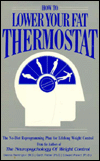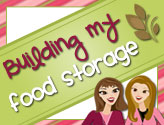Whole grain products include the bran, germ, and endosperm. Examples include amaranth, barley, brown rice, buckwheat, whole wheat pasta or whole wheat couscous, flaxseed, maize, millet, oats, popcorn, quinoa, rye, sorghum, spelt, triticale, wheat berries or cracked wheat (bulgur), and wild rice.

The kernel is like a little packet
image source: http://wholegrainnation.eatbetteramerica.com/facts/filled with a special mix of nutrients when all are used together.
Most of the grains available locally today are refined. When these grains are milled, or refine d, the bran and germ are removed, leaving only the endosperm.
d, the bran and germ are removed, leaving only the endosperm. The resulting product must then legally be "enriched" with synthetic vitamins and minerals.
Whole unrefined grains are of benefit with lots of nutrients and fiber, and when compared to their refined counterparts, they reduce weight gain, the
risk of type II diabetes, heart disease, stroke, cholesterol levels, and some cancers.

It is sometimes tricky to figure out when a product is whole grain and how to avoid refined carbohydrates. Often breads may say whole wheat on the label, but unless it states it is 100% stoneground, it is mostly made of refined flours. The word "wheat flour" on the ingredients list does not mean the product is made of whole grain. Further, fiber content is not an indicator of the purity of whole grains. Did you know that cornmeal is not made from the whole kernel of corn? It is available specially under the name "whole grain corn meal," such as this one by Bob's Red Mill. Read more about identifying whole grains and how to read ingredient labels at the
Whole Grains Council website.
These stamps also aid in finding whole grains. You can find them on your food packaging. I found this a little
tutorial link from the Whole Grains Council on how to interpret them.

"Consumers are increasingly aware that fruits and vegetables contain disease-fighting phytochemicals and antioxidants, but they do not realize whole grains are often an even better source of these key nutrients.
Moreover, whole grains have some valuable antioxidants not found in fruits and vegetables, as well as B vitamins, vitamin E, magnesium, iron and fiber." -Paulasbread.com
See more awesome reads about whole grain at paulasbread.com
I have heard that whole wheat flour left on the shelf loses 45% of its nutrients to oxidation within the first 24 hours after milling, and 90% after 3 days, and also high heats may damage the vitamins in wheat flour. I am still trying to verify this. Whole wheat flour cannot be dry packed and has a shelf life of "six months" (some say). However, this is only once a wheat berry has been cracked or milled; whole wheat berries can be dry packed and stored forever. Ten-thousand year old wheat berries have been found, planted, and sprouted. The packaging of a wheat berry to preserve itself is amazing!
Tips for first time users: Take it slow. Yes, whole grains are infamous for loosening stools, but it is not a permanent condition; the body needs to get used to eating whole grains, so start small and work up. The body
will adjust, but it takes time. (This is especially important for home food storage, because adjusting to eating oatmeal or legumes for that matter can be an added stress if the body doesn't know how to handle it, and more stress is not going to be helpful in an already stressful emergency situation.)
Second, when baking with whole wheat, there are two types of flour. Hard winter wheat varieties make a flour useful for recipes using yeast, such as bread, rolls, and pizza dough. Soft spring wheat is ground to make pastry flour used in goods with baking powder such as pancakes, waffles, muffins, and pie crusts. These things will taste gross if not made with pastry flour, which makes them much lighter.
Third, whole wheat products are subject to mold (for bread) and rancidity (in flour) faster than are refined products. That is the main reason white flour came to be in the first place: it keeps on the shelf longer. The bran and germ that whole grains have contains nutrients and oils which oxidize or feed mold a lot better than the nutrient-poor white flour products. So, its good for us, but spoils fast.
Here's a highly rated bread recipe that first time users might like which comes from Crystal at everydayfoodstorage.net:
Easy Whole Wheat Bread and another one without vital wheat gluten added.





































